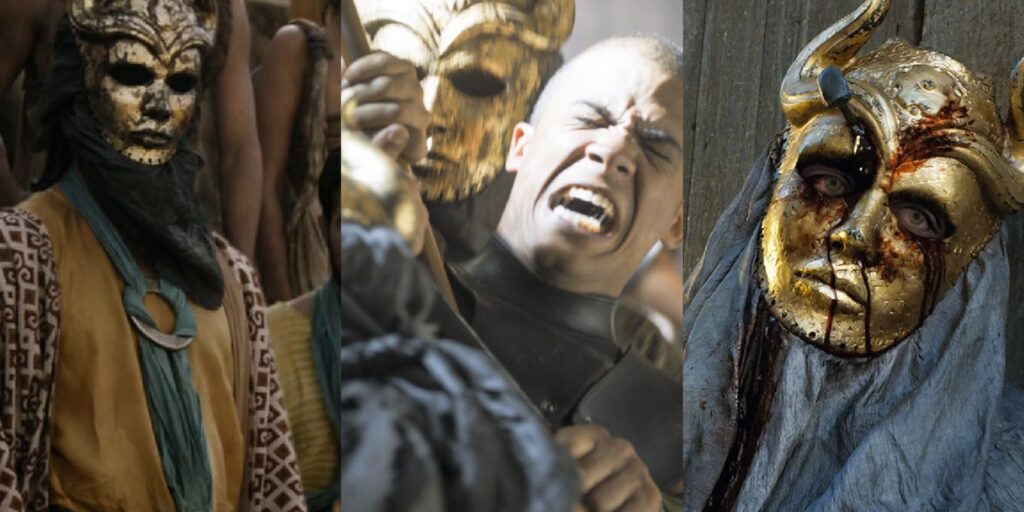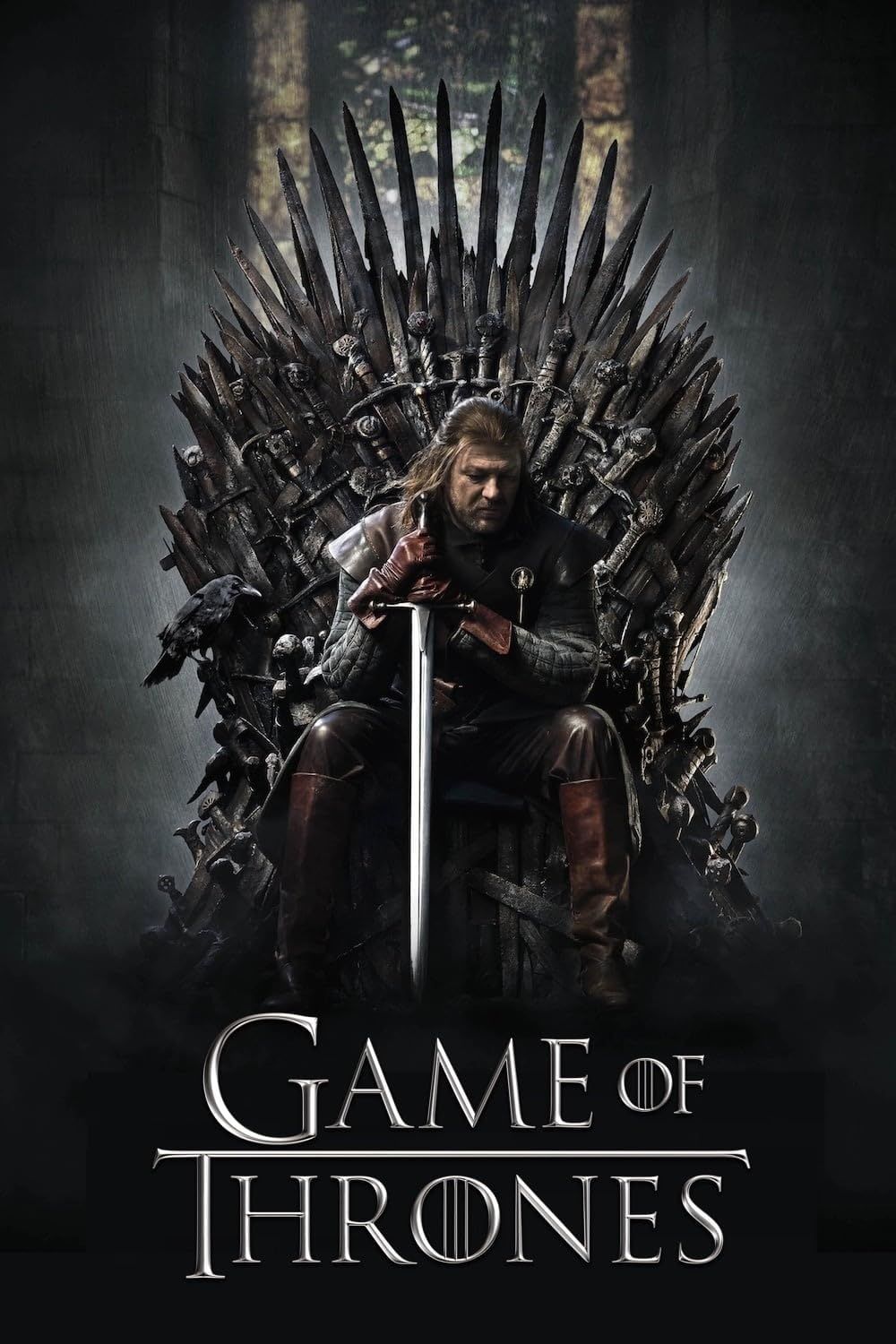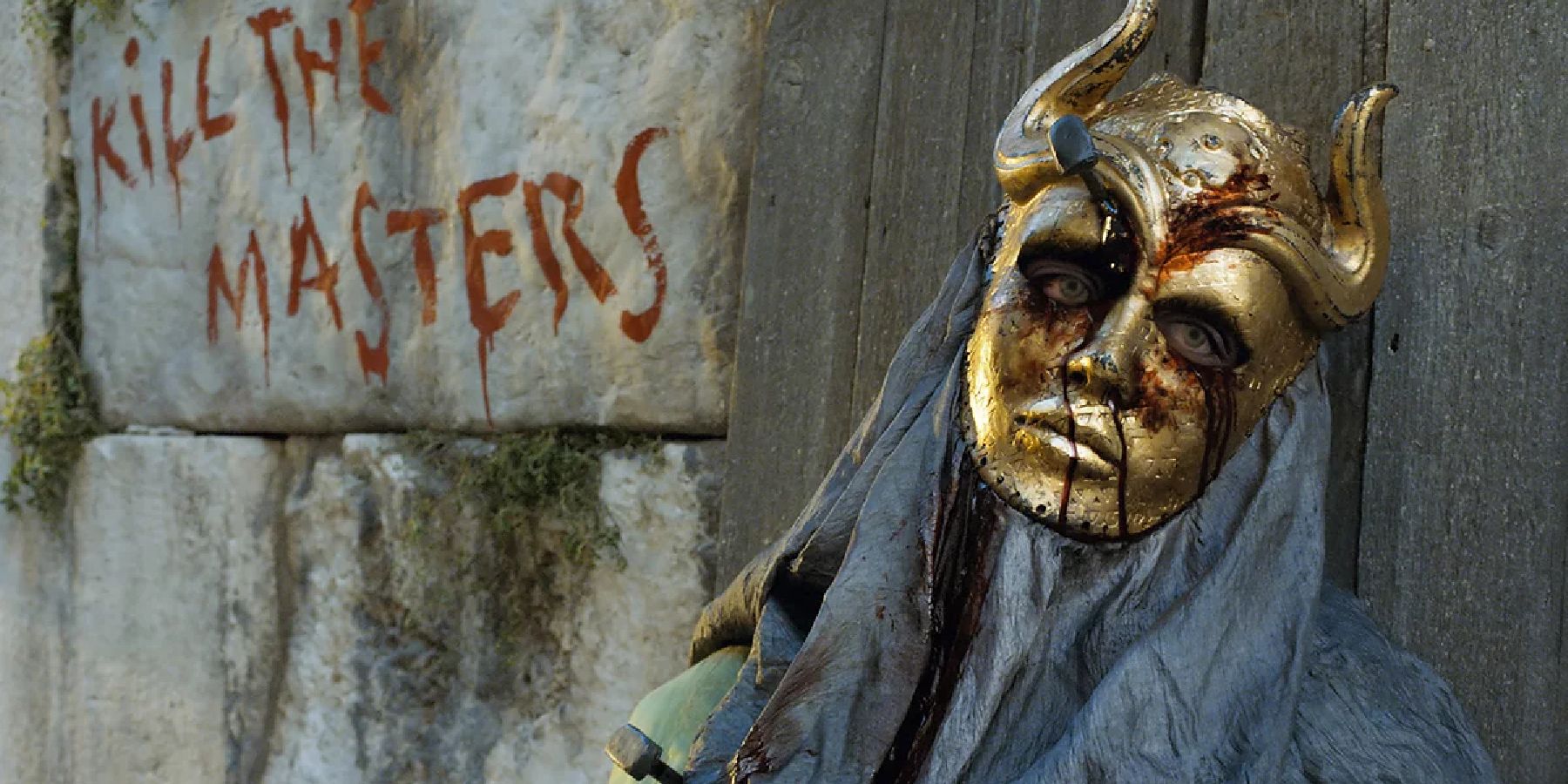
Highlights
- The Sons of the Harpy were a group of former slave masters who sought to restore their way of life and rebel against Daenerys Targaryen’s rule.
- Their attacks against Daenerys and her people started small but escalated, resulting in the deaths of many Unsullied, civilians, and even Ser Barristan Selmy.
- The Sons of the Harpy were eventually defeated when Daenerys returned with her dragons and a horde of Dothraki, teaching others not to go against her.
Daenerys Targaryen faced many challenging enemies throughout her journey in HBO’s Game of Thrones. Some were internal, some were familial, but most were those who thought themselves better than a woman. One of her most formidable opponents, before she ever reached Westeros, in the series was the slave masters and a small insurgent group that called itself the Sons of the Harpy. The harpy is a traditional symbol used in Ghiscari culture, which members of the group are a part of.
Members of the group hid their faces behind golden masks, allowing them some anonymity when they committed their terrorist attacks. While they were clearly organized, they didn’t seem like a group capable of standing up to the might of Daenerys Targaryen’s 8,000 Unsullied soldiers. Their guerilla tactics was something the eunuch mercenaries weren’t prepared for. It even gave them the opportunity to assassinate one of the best fighters/characters in all of Westeros.
The Origins of the Sons of the Harpy
After Daenerys Targaryen witnessed the treatment of slaves, especially the warrior-eunuchs who joined her cause, she vowed to put an end to slavery. Once she acquired the Unsullied in Astapor, one of the three slaver cities in Slaver’s Bay, Daenerys ordered the Unsullied warriors to kill the slave masters and ordered her dragon Drogon to burn the one she negotiated with. Afterward, the Khaleesi freed the Unsullied, but they remained and chose to fight with her as free men. From there, the city of Astapor saw a restructuring of its government. Daenerys installed a council to rule Astapor in her stead.
Losing the right to own slaves didn’t sit well with those who used to be in power. Even less after they lost all influence they once had in the politics of Slaver’s Bay. Daenerys didn’t stop in Astapor, either. She went from city to city, freeing slaves and changed the name of Slaver’s Bay, the hub of the world’s slave trade, to the Bay of the Dragons. This brought about the existence of the Sons of the Harpy. Former slave masters found it difficult to adjust to the new status quo as slaves used to be the number one way they made a profit. This radicalized the former slave masters, as they organized themselves into an underground group of terrorists who sought to put the status quo back to what it once was.
With Daenerys taking her seat on the throne in Meereen, the “Good Masters” retake previous conquered cities, including Astapor with Meereen in their sights. However, shortly after Daenerys left Astapor, a former slave named Cleon slaughtered the council she installed and named himself ruler of Astapor. In the show, it’s assumed that the Sons of the Harpy killed him when they regained control of the city, but the books reveal that he took back Astapor for the “Good Masters.” Daenerys notes in A Storm of Swords:
I have given Astapor a butcher king.
Why the Sons of the Harpy fought against Danaerys
The Sons of the Harpy seek to restore their former way of life. They’re not fans of a conqueror coming in and completely changing their customs. Their attacks against Daenerys and her people start out slow and insignificant at first, killing one Unsullied when he visits a prostitute. Their attacks escalate once the queen reopens the fighting pits in Daznak’s Pit. The Sons of the Harpy launch a massive orchestrated attack that kills hundreds of Unsullied, civilians, and the noble Hizdahr zo Loraq.
The worst act committed by the Game of Thrones television series was allowing the Sons of the Harpy to slay Ser Barristan Selmy. While the former knight is walking the streets of Meereen, the Sons ambush him, gain the better of him, and end his life. This is not true in the book, as his literary counterpart remains alive and well, earning the privilege of being a point-of-view character even.
What Happens to the Sons of the Harpy?
After the attack in the fighting pits, Drogon swooped in to save Daenerys, and the two flew off together. Once the smoke cleared, Varys and the others put Tyrion in charge of Meereen since he had the most experience ruling over a city. Thanks to Varys’ little network of spies, he was able to identify one person with ties to the Sons of the Harpy, bringing them closer to identifying the group’s leaders. Varys discovered that the prostitute Vala had a connection to the Sons and used her to identify their backers.
Those funding and supplying the Sons were the slaveholders who retook Astapor and Yunkai, who in turn received funding from the ruler of Volantis. Tyrion and the other advisors entered negotiations with the representatives of those three cities in an attempt to come to some form of agreement. They managed to come to a compromise that would see slavery return to Slaver’s Bay with the caveat that it would phase out over a seven-year period, along with all the masters receiving compensation.
Meereen experienced a brief period of peace before the rulers broke the agreement and attacked the city, with the Sons of the Harpy emerging en masse. However, Daenerys returned with Drogon, along with a horde of Dothraki, to retake the city. This decidedly put an end to the Sons of the Harpy, teaching others that to go against Daenerys is to go against her dragons.

Game of Thrones
Game of Thrones, based on the Song of Ice and Fire book series by George R.R. Martin, tells the sprawling story of warring families in Westeros. This includes the Starks, the Lannisters, the Baratheons, and the Targaryens. Along with human conflicts, Westeros is also threatened by the re-emergence of dragons, and an undead enemy from beyond the Wall.
- First TV Show
- Game Of Thrones
- First Episode Air Date
- April 17, 2011
- Where to watch
- HBO Max
